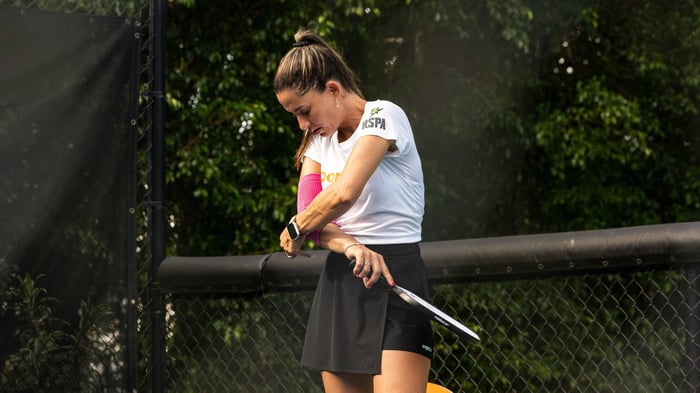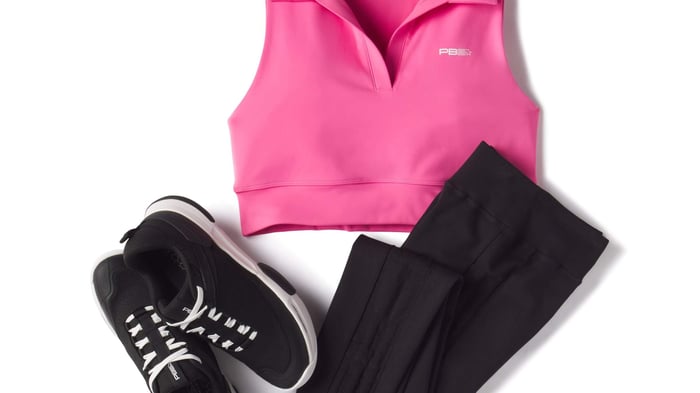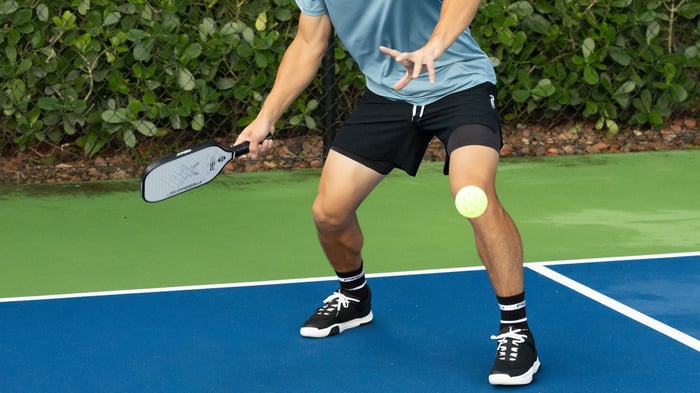Key takeaways:
Pickleball's rapid growth is fueled by its accessibility, community spirit, and ability to connect players of all ages and skill levels.
Mastering pickleball fundamentals, such as serving, returning, and court positioning, builds confidence and enhances both individual performance and team camaraderie.
The right gear, including paddles, footwear, and performance-driven apparel, not only improves your game but also helps you feel confident and connected to the pickleball community.
What started as a backyard game has become a nationwide phenomenon, with 13.6 million Americans playing pickleball in 2023 alone, more than triple the number from just three years earlier. This explosive growth isn't just about the sport's accessibility or the fact that players can start rallying within 15 minutes of picking up a paddle. Pickleball has captured hearts because it creates genuine connections between people of all ages and skill levels, fostering a community where everyone belongs and can thrive together.
Mastering pickleball fundamentals goes beyond learning proper technique or memorizing rules; it builds the confidence that transforms tentative beginners into enthusiastic players who can't wait to get back on the court. When you understand the essential skills, court positioning, and strategic thinking that form the foundation of great play, you're not just improving your game; you're strengthening the bonds that make pickleball such a special community experience. From choosing the right gear to developing consistent serves and returns, these fundamentals become second nature when you're equipped with performance-ready apparel that moves with you through every shot. Visit PB5star to discover how the right gear supports your journey from first serve to confident play.
The spirit and basic rules of pickleball
What makes pickleball truly unique isn’t just the fast-paced rallies or easy-to-learn rules; it’s the spirit of the game. From the moment players step on the court, there’s a sense of respect and camaraderie that sets it apart from other racquet sports. It’s common for players to introduce themselves before a match, compliment a great shot, and meet at the net after the game to acknowledge each other’s efforts, no matter the score. This welcoming culture helps beginners feel at ease and encourages seasoned players to act as mentors, creating a space where everyone grows together. With an honor system that relies on players calling their own faults and giving opponents the benefit of the doubt, pickleball builds trust and connection that go beyond the game.
The basic rules are simple enough that anyone can jump in and start playing within minutes. The court measures 20 by 44 feet and features a non-volley zone, known as "the kitchen," that extends seven feet from the net. Points can only be scored by the serving team, and games are typically played to 11 points, win by two. Serves must be underhand, hit from behind the baseline, and alternate sides after each point. Plus, the ball has to bounce once on each side before volleys are allowed. These beginner-friendly rules make it easy for new players to get involved, rally quickly, and feel the excitement that keeps so many coming back for more.
Pair that accessibility with the sport’s natural emphasis on social connection, and it’s easy to see why pickleball courts have become such vibrant community spaces. Players rotate partners, offer tips between games, and celebrate each other’s progress, all while rocking performance-ready apparel that helps them feel both confident and connected. Whether it’s calling out the score, switching sides, or chatting between points, every part of the game creates opportunities to build new friendships.
Essential equipment: What you need to start playing pickleball
The right equipment you need to start playing pickleball sets the foundation for comfortable, confident play that lets you focus on building connections and improving your game. While pickleball's accessibility means you can begin with basic gear, choosing thoughtfully designed equipment enhances your experience and helps you feel like part of the vibrant community from day one.
Select a paddle that matches your playing style - Modern paddles made from graphite, composite, or carbon fiber offer different benefits for weight, control, and power, allowing you to find the perfect match for your developing technique.
Invest in court-specific footwear for safety and performance - Specialized footwear designed specifically for pickleball significantly reduces ankle injury risk during lateral movements while providing the traction needed for quick direction changes.
Choose performance-driven apparel that moves with you - Moisture-wicking, breathable fabrics designed for pickleball's unique movement patterns help regulate body temperature and support agile play while expressing your personal style on the court.
Support sustainable practices through mindful gear choices - Brands like PB5star, committed to eco-friendly manufacturing and smaller production runs, create exclusive pieces that minimize environmental impact while fostering a sense of community pride among players who share similar values.
Start with quality balls designed for your playing surface - Indoor and outdoor balls have different hole patterns and durability features that affect bounce and flight characteristics, making the right choice important for consistent play and skill development.
Building your foundation: Serve, return, and court positioning
In pickleball, the serve is more than just how you start the point; it’s your one chance to score. That’s why it’s one of the most important shots to develop. Focus on consistency and depth over power. A deep serve pushes your opponent back and limits their ability to attack, giving you control from the start. Aim for their backhand whenever possible. It’s usually the weaker side and can lead to shorter, easier returns. You don’t need to blast it; a well-placed, thoughtful serve does far more to set up a winning point.
Just as critical is your return of serve. A solid, deep return keeps your opponent at the baseline and buys you time to move up to the non-volley zone line, one of the biggest advantages in the game. Teams that control the kitchen line often control the rally, so every return is a chance to take the upper hand. Avoid short returns that give your opponent easy access to the net. Your positioning on the court, especially during these early shots, makes a huge difference in whether you’re dictating play or scrambling to keep up.
Good court positioning turns solid shots into winning plays. It’s not just about where you stand; it’s about how you move and adjust. Unlike drills, real gameplay is unpredictable, so stay on your toes, weight forward, and be ready to move in any direction. This balanced posture helps you react quickly to angles and drives. And when you practice under game-like pressure, you build muscle memory and awareness that free you to focus on strategy, not just mechanics.
Developing confidence and community on the court
Confidence in pickleball comes from repetition, resilience, and the mindset to learn from every shot. With practice, your movements become instinctive, allowing you to play with flow instead of hesitation. Mistakes are part of the process. Each one teaches you something about timing or placement. The most confident players are the ones who talk to themselves positively, celebrate small wins, and keep showing up ready to improve.
Pickleball communities thrive when experienced players lift others up. Programs like City Pickle show just how powerful the sport can be, combining skill development with community-building for hundreds of kids. On any court, you can make a difference just by encouraging a partner, offering a quick tip, or helping someone get their serve going. These moments create bonds that go beyond the game. Pickup matches, practice sessions, and local tournaments naturally create opportunities for mentorship, connection, and friendship that keep people coming back.
Play better, look better: join the PB5star community
Mastering the fundamentals of pickleball is a lot more fun when you're geared up with apparel made specifically for the sport. Whether you're working on consistent serves, sharpening your court positioning, or building your confidence through regular play, PB5star performance apparel is designed to support every movement, while letting your personal style shine. It’s gear that doesn’t just help you move better; it helps you feel better.
At PB5star, we believe in gear that elevates performance and connects players through a shared love of the game. Explore our collection and see how the right apparel and footwear can support your journey, from learning the basics to becoming the confident, community-focused player who inspires others to pick up a paddle and join in.
FAQs
What are the most important rules for beginners to remember?
The double bounce rule stands as the most game-changing concept for new players. After the serve, the ball must bounce once on each side before anyone can volley. Remember that only the serving team can score points, and the kitchen (non-volley zone) extends seven feet from the net where you cannot hit the ball in the air. As covered in our discussion of the spirit and basic rules, these fundamentals create the strategic foundation that makes pickleball unique from other racquet sports.
How can I improve my serve and return technique quickly?
Focus on consistency over power when developing your serve; aim for deep placement that pushes opponents toward the baseline rather than trying to hit winners. Practice your underhand serve with the paddle below your waist, targeting your opponent's backhand side for maximum effectiveness. For returns, prioritize getting the ball deep into your opponent's court so you can advance to the net and take control of the point, building on the foundational techniques we explored for serve, return, and court positioning.
How do I build confidence and connect with the pickleball community?
Join group practice sessions or beginner-friendly tournaments where experienced players naturally become mentors and share helpful tips between games. The sport's built-in social structure, from introducing yourself before matches to meeting at the net afterward, creates natural opportunities for friendships to develop, reinforcing the community-building strategies we discussed earlier.








